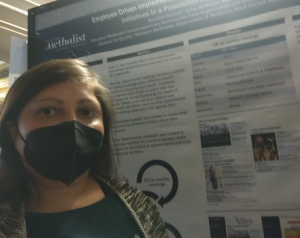Exploring Microaggressions
Part one in a series
“Jill,” a third-year nurse, intended it as a compliment. “I’ve always thought you’re pretty in an exotic way,” she said casually. Jill was caught off guard by the way her friend and co-worker, “Lana,” a third-generation American whose grandparents were born in Syria, responded to the seemingly harmless comment.
Lana responds with a halting, “Uh … Thanks … I … guess.” A clearly rattled Lana continues the lunch time conversation, but the comment hangs uncomfortably in the air for several minutes.
The hypothetical interaction is an example of how microaggressions can lead to strained relationships and break downs in trust. In part one of our series “Exploring Microaggressions,” we answer the question, “What are microaggressions?”
Microaggressions are defined as slights or snubs that are the result of an individual’s conscious or unconscious bias. They are often automatic or unintentional and may communicate hostile, derogatory or negative viewpoints. Any marginalized group can be the object of microaggressions. There are racial, gender, LGBTQ+ and disability microaggressions that occur daily toward these groups.
Most people who commit microaggressions view themselves as moral and decent folks who never would consciously discriminate against another person. Yet it is important that we acknowledge that none of us is immune from inheriting biases. Microaggressions are cumulative—“death by a thousand cuts”—and any one offense or put-down may represent the straw that breaks the camel’s back. The responses people on the receiving end may choose to take range from letting the comment go to reacting immediately or responding later
The Office of DEI offers its Recognizing The Impact of Microaggressions-Staff and Physicians Training course to provide tools to create inclusive language and enhance positive interactions, encourage discussions and promote positive change.
To register, search “DEI” in LMS. Contact DEITraining@houstonmethodist.org to schedule a group session.
Visit the DEI Toolkit for more resources on understanding and avoiding microaggressions.
In part two of our series next week, an HM staff member discusses what to expect during the Recognizing the Impact of Microaggressions course.
Song Lyrics Spotlight Microaggressions
Lasts week’s backlash surrounding the use of the words “Spaz” and “Spazzin” in the song Heated by Beyoncé presents a real-world example of an environmental microaggression and ableism.
Days after the release of her new album, Renaissance, the Houston singer announced while the words were not “used intentionally in a harmful way” she will modify the lyrics of the song in response to protests from disability rights advocates, who say the words have traditionally been used as a derogatory ableist slur. They are potentially offensive to those suffering from spastic diplegia, a form of cerebral palsy.
The words may be acceptable to many in the music/entertainment industry “environment,” which may make performers unaware that they could be offensive to some with disabilities. Their usage in this context qualifies as an environmental microaggression that simultaneously exhibits ableism because they infer that those suffering from medical conditions like spastic diplegia are not normal or less than when compared with able bodied people.
HM Department Presents DEI Efforts at Conference
Krutina Garcia, pharmacy specialist with the Houston Methodist Physicians’ Alliance for Quality, provided a presentation titled “Employee Driven Implementation of Diversity, Equity and Inclusion Initiatives in a Population Health Department” during the RISE for Equity: Reflect, Inspire, Strengthen & Empower conference in Chicago July 21-23. The presentation, co-authored by Dr. Julia Andrieni, president & CEO, Houston Methodist Coordinated Care ACO, offered insight into the Houston Methodist Population Health Department’s initiatives to increase DEI knowledge across its interdisciplinary teams. The initiatives focus on raising awareness to cultural holidays, traditions and practices, scheduling monthly DEI meetings and creating a new monthly newsletter that includes DEI information and resources.



Leave a Reply